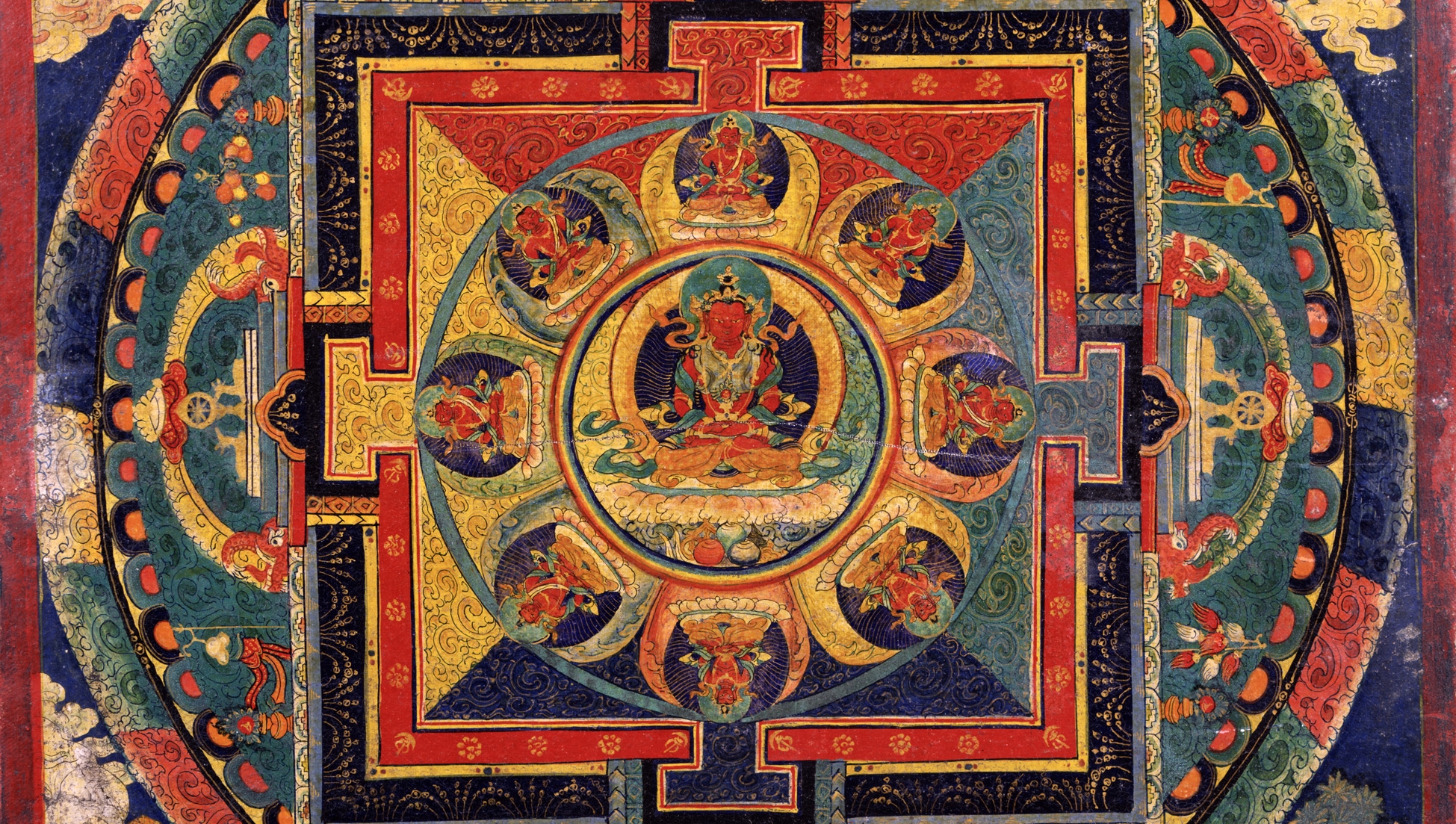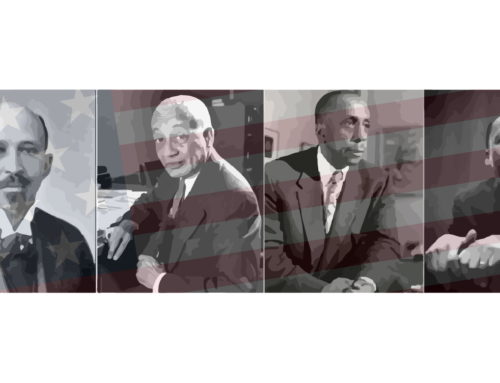By: Stefan Schindler
In the late 17th century, Isaac Newton synthesized the European scientific discoveries of the previous two hundred years. This scientific revolution had been built on the scientific method formulated by Francis Bacon, who insisted that nature’s secrets could be unveiled through a combination of rational theorizing and rigorous empirical testing. This was called the experimental method. All previous knowledge was thrown into question in what Descartes called “methodical doubt.”
The point was to establish science on a firm foundation. Assumptions and superstitions were to be replaced with certainties. Accordingly, mathematics was the language for the formulation of the laws of nature.
In the background of Newton are the towering figures of Copernicus, Kepler and Galileo. Descartes, too, made a contribution with his invention of Cartesian coordinates. Other major figures also played a part in making Newton’s bold new synthesis possible. Among these major players, those recording astronomical observations provided physics with the data necessary for Newton’s breakthrough.
In the early 16th century, Copernicus suggested that the earth revolves about the sun. This reversed the geocentric cosmology of Aristotle which had ruled the European worldview for more than a thousand years.
The heliocentric suggestion was profoundly influential because it largely solved the mathematical problems inherent in the astronomy of the day. It thus made possible a consistent calendar, which even the Church appreciated.
A major mathematical conundrum still left by the Copernican theory resulted from the Aristotelian assumption that the circle is the perfect paradigm for understanding nature. Copernican planetary orbits were assumed to be circular. The mathematic computations of Copernican orbits were still inconsistent with the mathematics of astronomical observation.
After ten years of agonizing intellectual endeavor, Kepler had an insight which Kant later called one of the greatest illuminations in history. Kepler himself describes his insight as a “revelation.” Kepler suggested that planetary orbits were elliptical, not circular. This immediately resolved a host of mathematical inconsistencies still haunting Copernican heliocentrism.
Galileo’s telescopic observations played a minor role compared to his formulation of the theory of inertia.
Again refuting Aristotle, and convinced by the results of innovative experiments, Galileo postulated that objects in motion would stay in motion – at the same velocity – unless opposed by countervailing forces.
He also showed that heavier objects did not “by nature” fall faster than lighter objects.
Newton’s invention of calculus, his experiments with refracted light, his consideration of Galileo’s suggestion that the moon effects the tides, his employment of Cartesian coordinates, his embrace of the elliptical theory of planetary orbits, his use of the new Galilean theory of inertia, his blending of astronomical data with bold new experiments in chemistry and optics – all contributed to his formulation of the laws of thermodynamics, his postulation of the theory of gravity, and his collapse of the Aristotelian divide between the earthly and the celestial. Newton’s laws of nature were “universal.”
These laws were so rigorous, coherent and convincing – shown to be true by experimental testing – that Newtonian science became the ruling paradigm in the thought of European intellectuals in the 18th century Enlightenment.
A chief concern of both 17th and 18th century philosophy was how to find room in a universe of mechanistic determinism for psyche, soul, ethics and free will.
In the 1780s, Kant’s Critique of Pure Reason launched a “second Copernican revolution.”
This revolution in philosophy – showing that the mind is an active participant in the shaping of perception, and therefore experience – laid the foundation for early 19th century German idealism: the positing of mind as primordial in the scheme of nature.
Kant’s philosophy is called “critical idealism.” The subsequent “speculative philosophies” of Fichte, Schelling and Hegel illustrate “absolute idealism.” Absolute idealism posits the primacy of mind over matter.
Matter is the mind’s self-alienation for the “working out” of its own self-realization.
We should briefly mention the historical context.
The American and French Revolutions – 1776 and 1789 – climaxed four hundred years of socio-political ferment: the democratization of ideas through the Gutenberg printing press, the breaking of class barriers, the rise of a newly prosperous merchant class, challenges to the dogmatism and authority of church and state, and the translation of philosophic, scientific and religious freedom into political freedom.
Many philosophers continued to concentrate on the mind-body problem inherited from Cartesian dualism.
Cartesian dualism leaves the question: How can mind and body (spirit and matter) interact if they are two completely different kinds of “substance”?
Other philosophers, including Voltaire and Rousseau, were more concerned with advancing free thought and social equality.
After Kant, the vitality and focus of European philosophic discourse moved from England, Holland and France to Germany. Germany was not yet a nation-state, being mostly a loose confederation of power centers: regional, rural, agrarian, often feudal; largely Protestant, but mixed with a mystic peasant Pietism inherited from Meister Eckhart and Jacob Boehme.
Supplementing theological studies, German philosophy began to bloom in urban universities. In Konigsberg, Immanuel Kant was the first German to receive a university position in philosophy. In Tubingen and Berlin, Fichte, Schelling and Hegel soon followed.
Kant’s “critical idealism” opened the door to a new way of thinking in Fichte and Schelling. Instead of trying to fit mind, soul, ethics and free will into a universe of material, mechanistic determinism, Fichte and Schelling turned the conundrum inside out, chartering a course toward the primordiality of Spirit. In German, the word Geist means both mind and spirit.
As metaphysicians, Fichte and Schelling attempted to do what Aristotle, Aquinas, Spinoza and Leibniz had done: provide a theory of everything. Fichte began by doing away with Kant’s noumenal ding-an-sich: the unknowable thing-in-itself behind what Kant said is all we can know, namely, appearance.
What Fichte loved about Kant was that Kant had rescued science from Humean skepticism by showing that nature – perceived appearance – necessarily conforms to the intuitions and categories that make up the grid-structure of the human mind. The two intuitions are space and time, and the categories include number, matter and causality.
For Kant, the human mind is an active co-creator of perception, not simply a passive recipient. Mind as agent, not mere spectator, is the key. This key opens the passage from critical to absolute idealism.
Fichte and Schelling lift Kant’s conception of human mentality to a cosmic level. Reality itself is Geist – Mind or Spirit – creating nature out of itself, in opposition to itself, in order to evolve to a full understanding of itself. This move, called dialectic, launched the process movement in philosophy climaxing in Hegel. It was, of course, a temporary climax, with variations emerging later in Bergson, James and Whitehead.
What Hegel makes clear is that the movement of human history is the Self-realization of Geist. Geist achieves self-understanding through progressive epochs of human understanding.
For Hegel, the embodied human mind, interacting with nature in always social situations, gradually achieves self-understanding through those interactions. Hegel made the unfortunate claim that this process culminated in Hegel’s philosophy and the Prussian state: the yin and yang of Geist’s self-realizing fulfillment.
Humans, interacting with nature and other humans, progress over the course of history. Understood properly, says Hegel, this is the history of Spirit; the vehicle for Spirit’s creative evolution.
Spinoza, the 17th century Dutch philosopher, provides the primary backdrop for the neo-Kantian move made in Fichte and Schelling and climaxing in Hegel. For Spinoza, mind and matter are simply two modes of God’s being. Loosely speaking, and echoing the 14th century mysticism of Meister Eckhart, humans are a part of nature, and nature is God’s self-expression. However, in Spinoza, who still ironically argues for ethics, nature operates with mathematical precision and mechanistic determinism. Events occur, as with Newton, but, as also with Newton, there is no sense of evolutionary becoming.
The process movement launched by Fichte – again, with echoes of Eckhart – introduces dialectic in order to set God and nature (two in one) in evolutionary motion. Borrowing Aristotle’s notion of biology as a teleological, developmental process – and borrowing further back to Plato’s notion of the Absolute as a living being – Fichte and Schelling see Geist as an organism: a being which is also a developmental becoming precisely because organic, alive, animated with desire for growth. Hegel’s great achievement was to show this growth process exemplified in progressive epochs of human history, illustrated by progressive stages in Western philosophy. These stages illustrate the growth of freedom. Wisdom and freedom go together.
Wisdom and freedom go together – this is a very Buddhist idea. Indeed, it is the core teaching in Buddha’s Four Noble Truths, from which emerge all Buddhist variations and traditions. In Buddhism, the persistent knowledge seeker progresses toward the wisdom that liberates. The knowledge that culminates in liberating wisdom is self-understanding.
For Buddha, as for Plato, wisdom lies coiled at the heart of human being. It is the active agent of birth, life and death, and is waiting to be discovered. While it waits, the ego personality, caught up in the drama of unenlightened society, perpetuates the ignorance that causes suffering.
In 2nd century CE India, Nagarjuna, as part of Buddhism’s Mahayana reform movement, founded Madhyamaka – Middle Way Buddhism. Nagarjuna emphasized three basic Buddhist ideas: impermanence, emptiness, and dependent co-origination.
These three mutually implicative ideas go together with Buddha’s notion of not-self (anatta or anatman): no substantially enduring, independent identity beneath the ceaseless flux of existence. Emptiness means empty of enduring selfhood. All things change (impermanence), and all things emerge in dependent co-origination. To be is to interbe, and all being is becoming.
In 4th century CE India, the Mahayana-Madhyamaka philosopher-psychologist Asanga founded the Buddhist school called Chittamatra: the Mind Only movement. (Chittamatra is also called Yogachara and Vijnanavada). Asanga felt that Nagarjuna’s “emptiness” (shunyata) veered dangerously close to nothingness.
Emptiness is not nothingness. Emptiness is absence of independent, self-sustaining identity. Emptiness is the absence of what Aristotle called “substance.” But this absence – implying ceaseless change and interbeing – may yet be called something, and Asanga calls it Mind. (Chitta is a Sanskrit word for mentality.)
Asanga’s younger half-brother, Vasubandhu, embraced the Chittamatra position, and wrote extensively on its elaboration. Vasubandhu developed the notion of alayavijnana (“store-house consciousness”), anticipating much of the psychology of Freud and Jung. Vasubandhu wrote commentaries on orthodox Theravada Buddhism and reformist Mahayana Buddhism, becoming one of the most important and influential philosophers in all of Buddhist history. He also became the 21st Indian patriarch of the Zen tradition.
Asanga’s notion of reality as Chittamatra – Mind Only – has two sides: individual and universal. Asanga’s philosophy is deeply psychological on the one hand, cosmological on the other. Individual minds project the world they experience. As you think, so you perceive. The essence of Buddhist psychology is that it allows for the deconstruction of habitual thought patterns. Deconstruction is liberation. As the mind empties itself of samskaras – habitual dispositions – it opens to the bliss-wisdom of Universal Mind. The final stage of this opening is enlightenment. Buddha sets the example with his nirvanic epiphany under the bodhi tree at the age of 35 in mid-sixth century BCE.
Asanga’s pointing to Heart-Mind – as Buddha’s Dharma-teaching of the deepest truth of personal and panentheistic reality – is echoed by Sencan and Huang Po, two founders of Chinese Zen (called Ch’an).
Sencan says in Trust in Mind: “The nondual is one with the trusting mind. The Way is beyond language.” He says: “The Way is perfect, like vast space; nothing lacking, no excess.”
Huang Po says in Transmission of Mind: “All the Buddhas and all sentient beings are nothing but the One Mind, beside which nothing exists.” He says: “You are fundamentally complete in every respect.” He says: “Every single thing is just the One Mind.” He says: “Mind is transmitted with Mind.”
Of course, like any good Zen master, and echoing Sencan, Huang Po concludes: “In fact, however, Mind is not Mind, and transmission is not transmission.”
In Asian mentality, there is no sharp distinction between feeling and thinking, emotion and cognition. As above, so below. Universal Mind is Heart-Mind, just as human mind is always permeated by emotional overtones and undertones. There is no mind without mood. The mood of Universal Mind is bliss (ananda). Buddha’s nirvana is a blissful state.
It is not, however, other-worldly. The world with all its woes remains, and Buddha remained a being-in-the-world. His bliss becomes compassion.
After his enlightenment, Siddhartha Gautama Shakyamuni Buddha taught – and continued to meditate – for forty-five years. Buddha was more teacher than preacher. He taught a way to enlightenment. This way – or path – is essentially deconstructive and therapeutic.
Early 19th century German idealism – embodied in Fichte, Schelling and Hegel – traced a philosophic path trod earlier in 4th century India by Asanga. Like all Buddhist adepts, Asanga was adept at meditation. Asanga glimpsed what Buddha saw in the openness of meditative insight. Buddha and Asanga are in fact closer to Plato than to Fichte, Schelling and Hegel. For Plato and Buddha, wisdom is “recollection.” Yet Buddhism, like Taoism, is a process philosophy. And Asanga merely modified Nagarjuna’s Madhyamaka. Middle Way Buddhism is dialectical at its heart: paradoxical, dynamic and panentheistic.
For the most part, Western philosophers don’t meditate, and Fichte, Schelling and Hegel were no exception. Instead of meditation, they engaged in philosophic contemplation. Yet their contemplations – partly influenced by the German Pietism vivified by the mysticism of Eckhart and Boehme – led to insights remarkably similar to Asanga’s Chittamatra, which Asanga sought to articulate as the deepest meaning of Buddha’s explicit psychology and implicit metaphysics.
Fichte and Schelling provided the bridge from Kant to Hegel. Of the German process-idealist trinity – Fichte, Schelling and Hegel – Schelling is closest to Eckhart and Asanga in temperament and worldview.
Schelling was deeply “romantic.” Like Plato and Buddha, he warned against the temptation to think that mere intellect – any system of concepts – could capture the ultimate nature of reality. Like Buddha, Plato and Eckhart, Schelling resorted to myth and metaphor in his philosophizing, using words to point to the unsayable.
Dialectical thinking is a ladder; it is not itself the view from the mountaintop. In this sense, Schelling anticipates Kierkegaard, Wittgenstein and Whitehead, reaching back through Socrates to Heraclitus, the first Western Zen master.
Heraclitus wrote his “fragments” about the same time that Buddha balanced teaching with meditative silence and enigmatic smile. Let us, then, give Heraclitus the last word: “No matter how far you travel, you never reach the end of psyche.”
Stefan Schindler graduated with a B.A. in philosophy from Dickinson College in Carlisle, Pennsylvania. Awarded a Woodrow Wilson Fellowship, he received his Ph.D. in philosophy from Boston College in 1975. As Associate Professor in the Humanities Department at Berklee College of Music in Boston, he taught philosophy, psychology, education, and religion from 1976 to 1990. In 1988, he was awarded the Boston Baha’i Peace Award. He lived in a Zen temple in Cambridge for a year; an echo of his three years in Japan as a child. In Philadelphia, Pennsylvania, he taught at The University of Pennsylvania, La Salle University, The University of the Sciences, and Community College of Philadelphia.
Dr. Schindler is a Trustee of The Life Experience School and Peace Abbey Foundation in Millis, Massachusetts. He wrote the Peace Abbey Courage of Conscience Awards for Howard Zinn and John Lennon. With Justice Lewis Randa, he co-founded The National Registry for Conscientious Objection, and co-wrote the Courage of Conscience Awards for Thich Nhat Hanh, Ram Dass, and the Dalai Lama. Schindler’s books include The Tao of Socrates, America’s Indochina Holocaust, Discoursing with the Gods, and Space is Grace. He currently teaches courses at Salem State University’s Lifelong Learning Institute. He is working on his next two books: Buddhism in a Seashell, and The Origins and Evolution of Buddhism in Tibet.
He has also written an article for Political Animal called Buddha’s Political Philosophy.
Image: Mandala of Amitayus, Tibet, 19th century, Rubin Museum of Art. Amitayus is the (Mahayana) Buddha of Infinite Life. (via Wikipedia)










Hi Stefan – I received this article from you a few weeks ago. Unfortunately I have been extraordinary busy with various projects and after i printed it out it got lost under a pile of other reading stuff. I have just rediscovered it and will read it and get back to you at the weekend … best wishes Graham
Author’s footnote — My presentation of Yogachara Chittamatra interprets it as a cosmological ontology . There is, however, another interpretation, equally viable and perhaps more popular, which interprets Yogoachara as pure epistemology, with only secondary ontological implications. Asanga and Vasubandhu may well be saying that since all we know can only be known through consciousness, their phenomenology is a study of the function, structure and levels of consciousness, and that is the reason it is called Chittamatra, i.e., “mind only.” From this perspective, and in Western terms, Yogachara Chittamatra has more in common with Kant and Husserl than Fichte, Schelling and Hegel. Nevertheless, the aim of their phenomenology is to promote the fusion of wisdom and compassion that resides at the heart of all Buddhism. Accordingly, they share much in common with Nagarjuna, despite the epistemological differences they articulate. All three belong to the Mahayana Buddhist tradition, with an emphasis on the bodhisattva way of life — a way of life that emphasizes humility, simplicity, kindness, compassion, generosity, and evolutionary awakening. Indeed, Vasubandhu is famous for describing the stages (bhumis) of bodhisattva development (toward Buddhahood). Yogachara — like Nagarjuna’s version of Madhyamaka — thus exhibits a Kantian concern for human dignity, and a Heideggerian “caring” for authenticity and being-in-the-world. Meanwhile, of course, the question remains whether epistemology can ever really be divorced from ontology. In any case, my article does not aim to be in any sense definitive. Rather, it is intended to be a suggestive sketch, hopefully provocative — in the best Socratic sense — with regard to the issues with which it deals.
It was an amazing article about Buddha and other very important personalities in the world . Really it is very interesting. Many things are to learn more about Buddha.